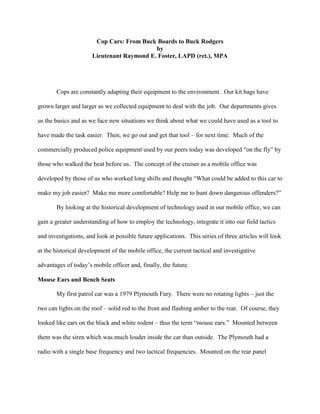The document discusses the evolution of police car technology and equipment from simple setups in the 1970s to modern advancements that enhance officer safety and efficiency. It outlines how innovations have largely originated from on-the-ground officers adapting their vehicles to meet operational needs. The article emphasizes the significance of ruggedization and the transition from basic systems to integrated mobile digital terminals, noting improvements in user interface and functionality over time.




